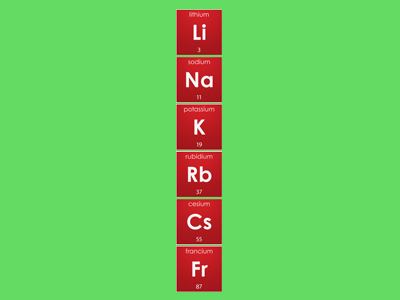
Periodic Table - Group 1 Elements
This Chemistry quiz is called 'Periodic Table - Group 1 Elements' and it has been written by teachers to help you if you are studying the subject at high school. Playing educational quizzes is a user-friendly way to learn if you are in the 9th or 10th grade - aged 14 to 16.
It costs only $12.50 per month to play this quiz and over 3,500 others that help you with your school work. You can subscribe on the page at Join Us
A knowledge of the periodic table is a vital part of high school Chemistry. In this quiz we look at the group 1 elements - the alkali metals.
Ready for more?
not all...
quizzers. Try to win a coveted spot on our Hall of Fame Page.







